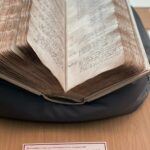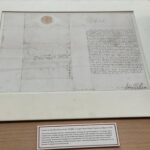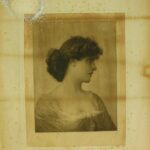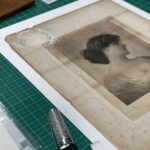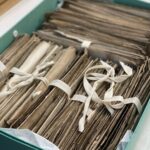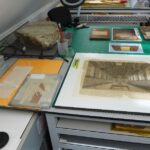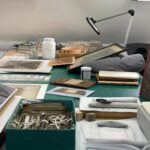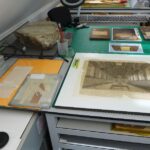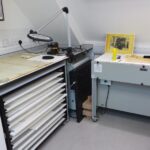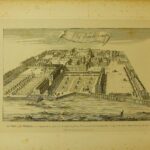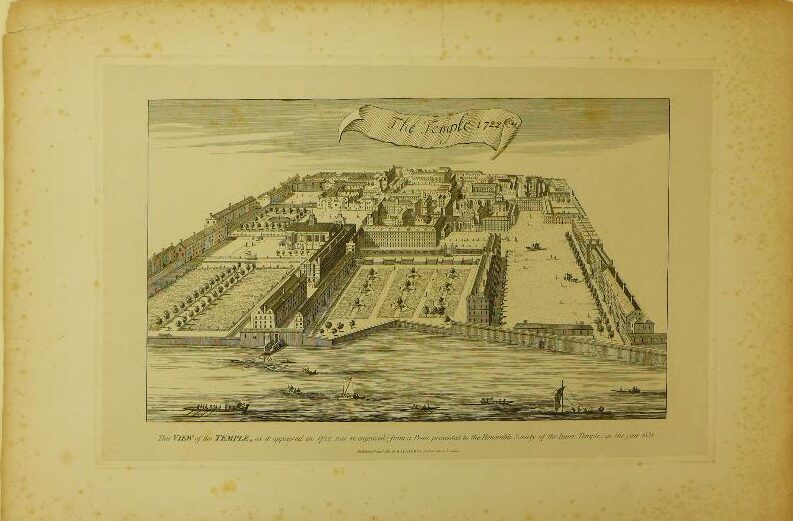
Treasures Unveiled in Middle Temple
Our School Archivist explores the archives of Middle Temple …
At the kind invitation of our President and eminent barrister, David Kinnear, I accompanied him on a fascinating visit to the Open Evening on May 24 of the Archive of the Middle Temple, one of the four barristers’ associations otherwise known as the Inns of Court (the others being the Inner Temple, Gray’s Inn and Lincoln’s Inn), built on a peaceful enclave between Fleet Street and the Thames originally occupied by the Knights Templar in the 12th Century and whose church, dated 1185, still stands.
The Inn’s Archive provides a rich and diverse record of its history from 1501 to the present day in written documents, prints, illustrations, photographs and other written and pictorial forms. Here on display was an array of treasured historical items: amongst them, a 12th-13th-Century charter granting land to the Knights Templar; the Minutes of the Inn’s Parliament open to a page recording the visit of Sir Francis Drake in 1586; a letter from Charles I in 1631 referring to the recent lax observance of Lent by the Inn members and demanding better observance of his proclamation on the subject; and a petition from Charles Dickens in 1855 to withdraw from the Inn now that writing novels was taking up an unexpected amount of his time – and asking for his deposit to be returned!
After an excellent introductory talk by the Inn’s Archivist, Barnaby Bryan, and guided by him and his expert colleagues, we explored the Repository – the large, environmentally controlled room where the archives reside in shelf-stacks – and the Conservation Studio, where the cleaning, washing and repairing of archive items takes place along with other specialised archival treatments such as the flattening of delicate parchment and the combating of red rot in old leather.
Here in the Studio we saw an architectural plan about to be treated with a heated spatula to remove damaging cellotape repairs; the board backing of a black and white photograph of the interior of Temple Church, which was becoming acidic and would eventually damage the photograph, being painstakingly and evenly pared away, layer by layer, with a scalpel until the back of the photograph was reached; a black and white 19th-century intaglio print of Middle Temple Hall that had been surface cleaned, immersion washed and lined now having its missing sections infilled using starch paste and handmade Japanese paper; and a black and white mezzotint of a portrait of an unknown woman, that had extensive surface and engrained dirt, being cleaned using finely-grated eraser crumbs (made in the studio using a nutmeg grater!) rolled in a circular motion over the paper surface to pick up the dirt. We were also amazed to see a valuable old intaglio print – a view of the Temple in 1722 – sitting in a sink of water! We were assured by the Archive’s Conservator, Siobhán Prendergast, that this immersion washing was a standard method of removing the acidic components of a print if it had, like this one, lots of staining and foxing and if the discoloration was water-soluble.
I viewed with envious eyes these and other methods of conservation, preservation and display which are beyond what we are capable of at the moment, but which can hopefully be developed when we have the services of the permanent archivist which the Headmaster proposes to employ in 2024.
My thanks to David, Barnaby and his Archive colleagues for a stimulating, absorbing and instructive visit.
Colin Bagnall
School Archivist (OC 1949-1955)
You can explore the archives of Caterham School through our digital archive: www.caterhamschoolarchive.co.uk
Click on images below to view photo gallery …
- The visit from Francis Drake
- Letter from King Charles
- Portrait of an unknown woman, with cleaning begun top left
- Work in progress in the Conservation Studio
- The Temple, 1722. Intaglio print in immersive wash
